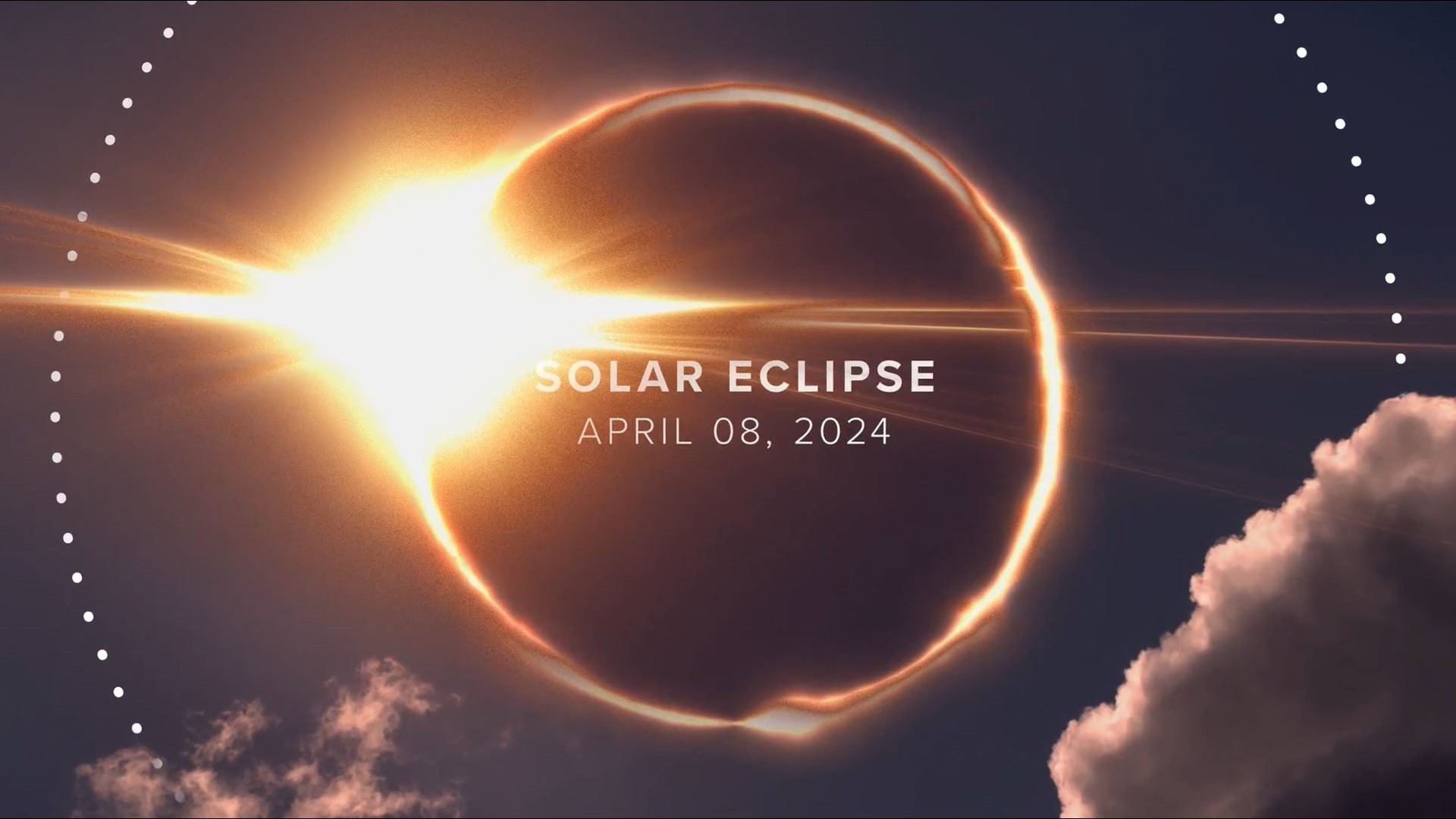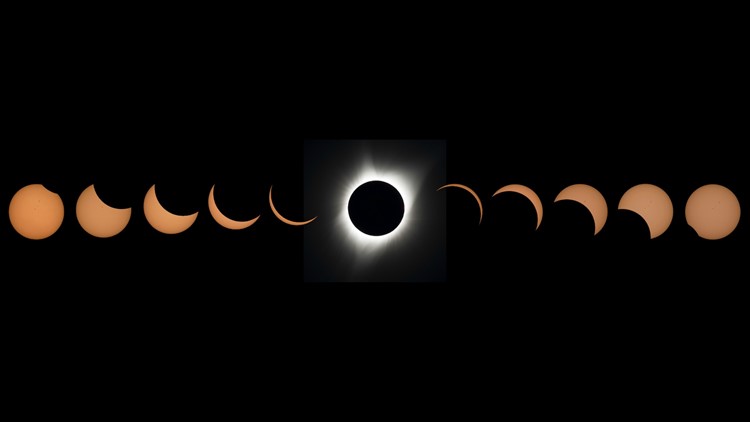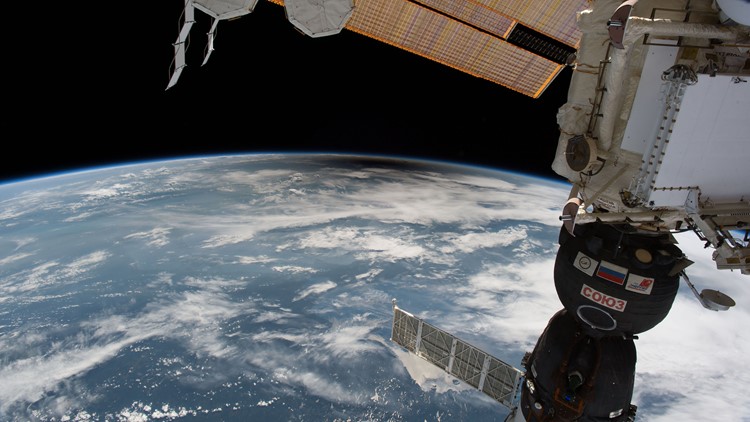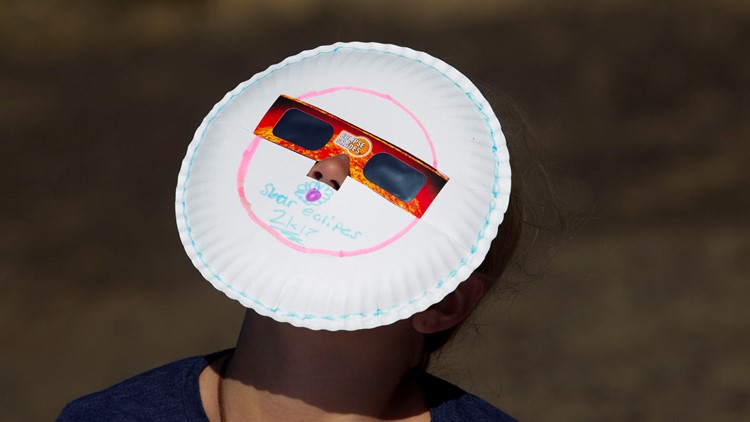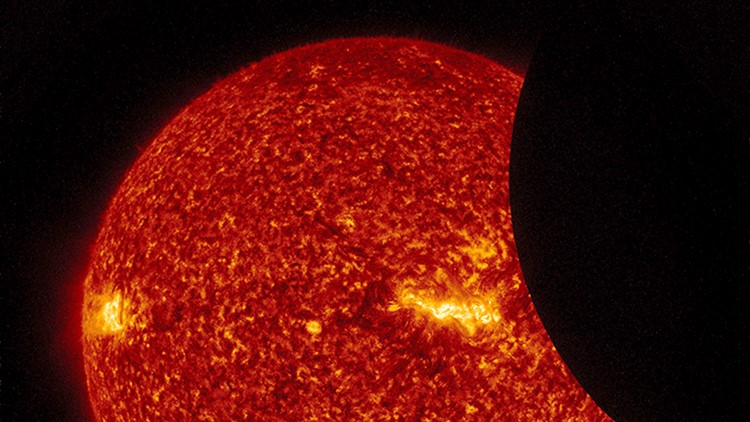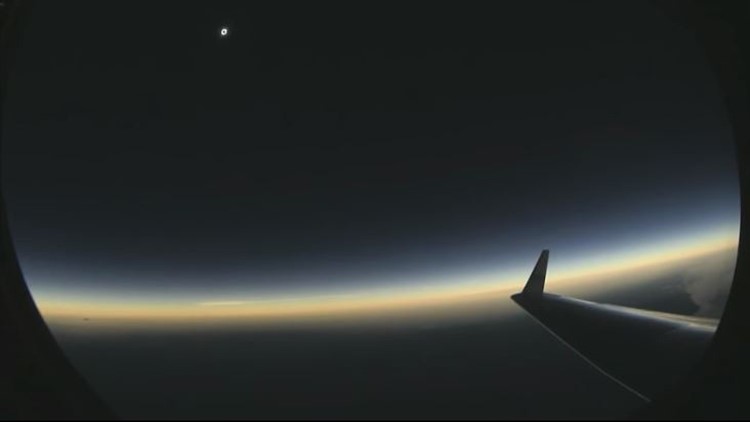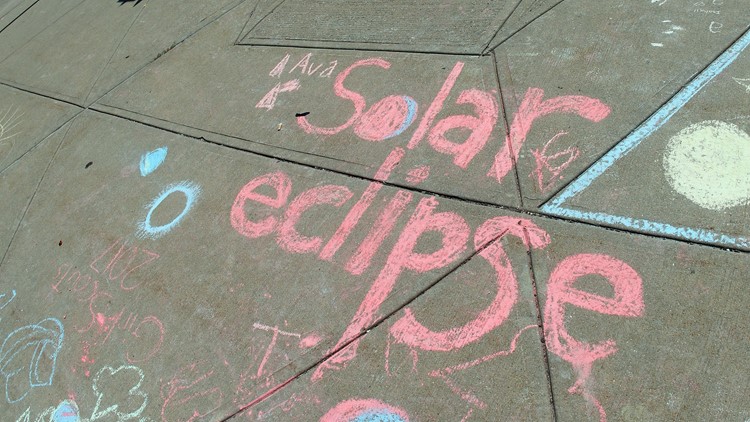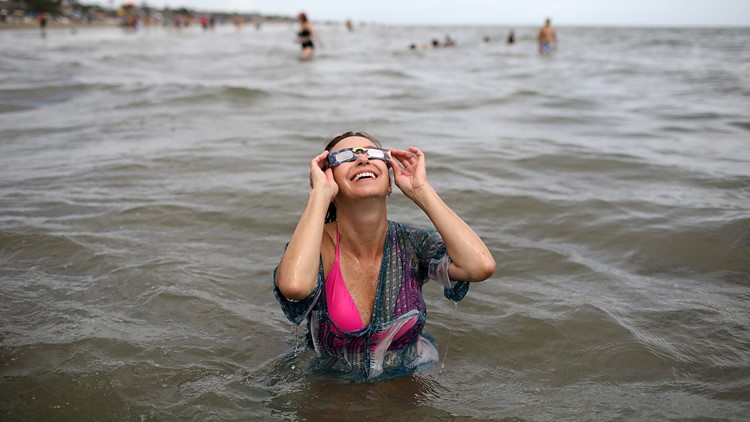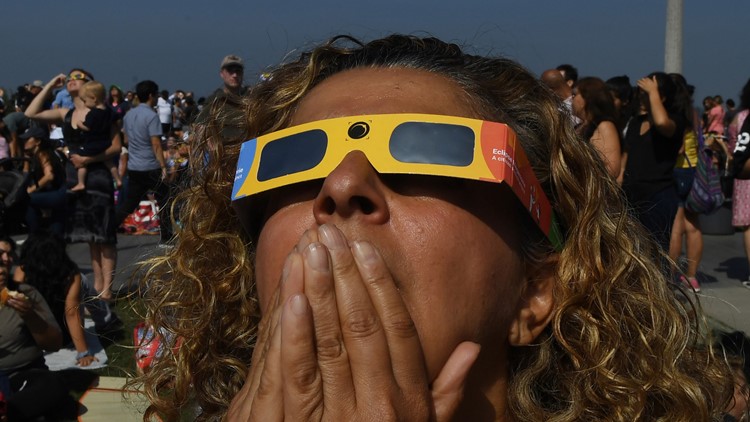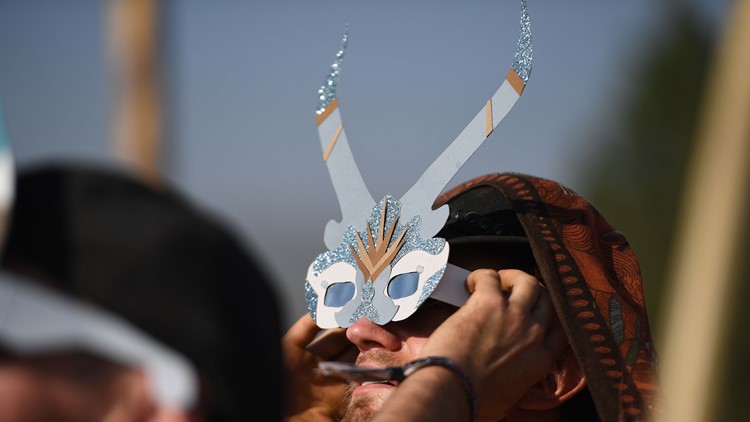MICHIGAN, USA — A small portion of Michigan is getting ready for a once-in-a-lifetime celestial dance between our sun and moon next month.
On April 8, the moon will pass in front of the sun, casting a shadow that will streak across North America, completely or partially blocking out the sun depending on where you are.
Most of Michigan stands to see a near-total eclipse, with the moon covering some 90% or more of the sun depending on where you are viewing from. A small corner of the state near Detroit will see a total eclipse.
There are four types of solar eclipses: Total, annular, partial and hybrid.
A total eclipse happens when the moon passes between the sun and earth, completely blocking out the sun.
An annular eclipse also happens when the moon passes between the sun and earth, but the moon is far enough from earth that it does not completely cover the sun.
A partial eclipse happens when the moon passes between the sun and earth but it is not perfectly lined up, causing only part of the sun to be blocked by the moon.
A hybrid eclipse happens when an eclipse shifts between and annular and total as the moon's shadow moves across the earth.
Since 1800, Michigan has experienced three total solar eclipses and four annular solar eclipses. But it has been nearly a lifetime since the last total solar eclipse blocked out the sun in the Michigan sky.
Total Solar Eclipses in Michigan 1800-2100
The most recent total solar eclipse in Michigan happened in 1954. On June 30, a portion of the Upper Peninsula, namely from the tip of the Keweenaw Peninsula down to the Wisconsin border, got to see the eclipse in the path of totality.
29 years earlier on Jan. 24 1925, most of the Upper Peninsula and Northern Michigan saw a total solar eclipse that extended across several states on into the Atlantic Ocean. There was also a total solar eclipse over 100 years earlier on June 16, 1806.


Jan. 24, 1925 - This total solar eclipse was seen in its totality in much of the Upper Peninsula and Northern Michigan. The shadow of the moon began crossing the earth in southwestern Quebec in Canada, crossing over part of Minnesota and Wisconsin before blacking out the sky in Michigan. The eclipse runs across the Atlantic Ocean, ending north of the British Isles.

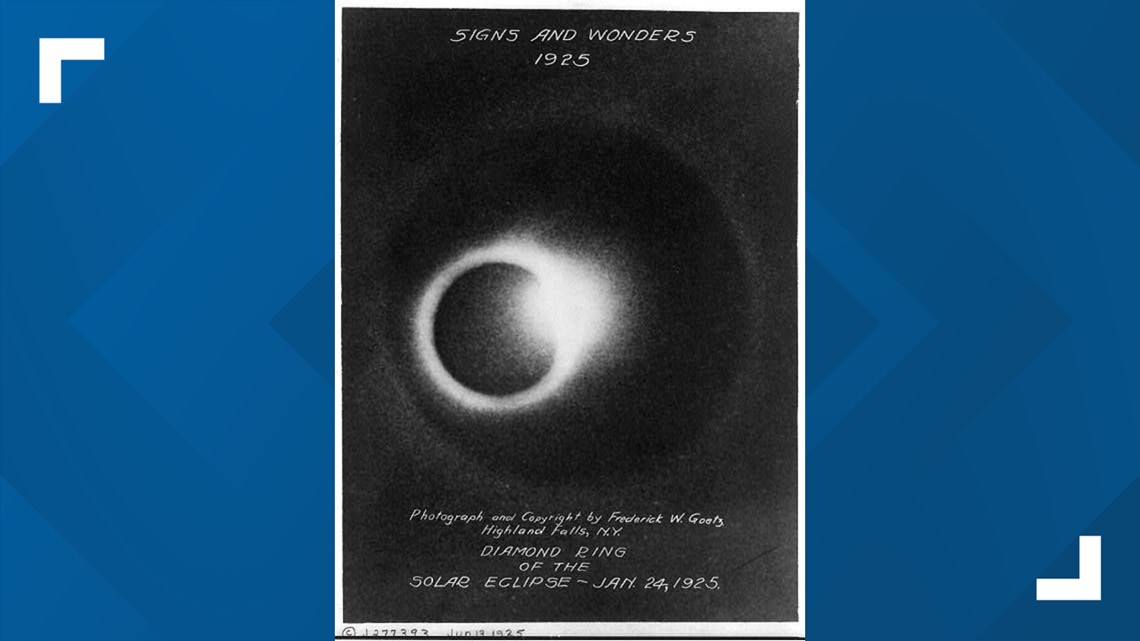
June 30, 1954 - The 1954 total solar eclipse only clipped a portion of the state in the Upper Peninsula, leaving the rest of the state seeing a partial eclipse with a high percentage of coverage. During this eclipse, the moon began casting its shadow on Earth over Nebraska and traversed across the United States, Canada, the Atlantic Ocean and Europe before ending in India.

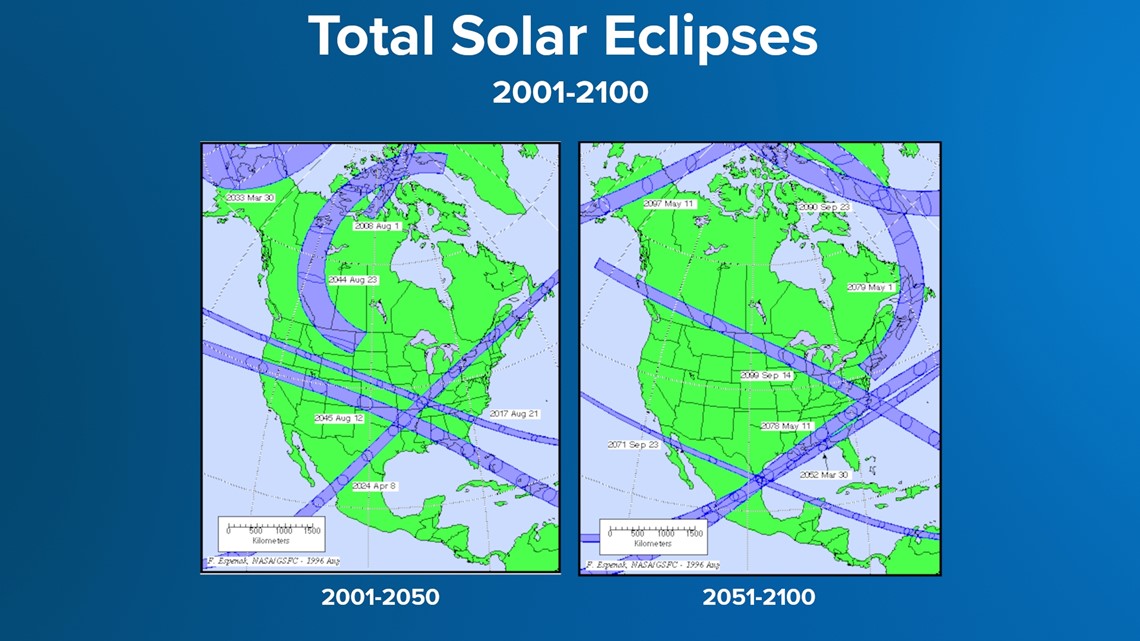
In this century, Michigan will experience two total solar eclipses, with the first being on April 8, 2024. Another total solar eclipse will cross along the southwestern portion of Michigan on Sep. 14, 2099.
Annular Solar Eclipses in Michigan 1800-2100
Between 1800 and 1851, Michigan experienced two annular solar eclipses, exactly 27 years and one day apart on Sep. 17, 1811 and Sep. 18, 1838.


Michigan's next annular solar eclipse happened on May 26, 1854, when the moon's shadow passed across part of the Upper Peninsula. It wasn't for another 140 years that Michigan would experience its next annular solar eclipse.
On May 10, 1994, the moon's shadow passed over southeastern Michigan during an annular solar eclipse. And while the moon didn't completely block out the sun during this event, people in the Metro Detroit area saw some of the highest percentage of coverage.
Annular Solar Eclipses in Michigan 2001-2100


Between now and the end of the century, Michigan will experience three more annular solar eclipses, the first of which happen on June 11, 2048. That eclipse will cover most of the Upper Peninsula, as well as some of Northern Michigan.
The two other annular solar eclipses that will be visible in Michigan will happen on July 1, 2057, and July 23, 2093.
Michigan also saw a partial eclipse relatively recently on Aug. 21, 2017. You can see photos from it in the gallery below.
Solar Eclipse 2017
►Make it easy to keep up to date with more stories like this. Download the 13 ON YOUR SIDE app now.
Have a news tip? Email news@13onyourside.com, visit our Facebook page or Twitter. Subscribe to our YouTube channel.
Watch 13 ON YOUR SIDE for free on Roku, Amazon Fire TV Stick, and on your phone.

